#William Moulton Marston
Text
So there was this psychologist who invented a type of blood pressure test, and while testing it on his wife, he noticed her blood pressure seemed to be elevated when she was angry or excited. This fact lead to a California police officer named John Augustus Larson to develop the polygraph, aka "lie detector", by combining the blood pressure test with several other measurements in an attempt to determine if the subject is lying.
This has lead the psychologist to be known as the father of the polygraph, even though he didn't directly invent it. He definitely tried to commercialize it, though including appearing in a series of ads for Gillette Razors, using the lie detector as a theme.

A few years after the invention of the polygraph, he published a book titled "Emotions of Normal People", heavily based on the original research of his life partner (as he and his wife were in a polyamorous relationship, living together for many years (including 50 years after his death!) and having two of his children). In it, he provided a defense of many sexual taboos. In it, he developed the DISC theory: dominance, inducement, submission, and compliance. He assigned active and passive to emotions and behaviors, and environments as antagonistic and favorable, and theorized how these different attitudes and environments interacted. For example, "Submission produces passivity in a favorable environment".
This was pretty much exactly as BDSMy as it sounds, with him also having theories about how the masculine drive for freedom was inherently violent, whereas women could use their "loving allure" to lead people to an ideal state of submission to loving authority.
Anyway in 1940 he was interviewed by his life partner under a pseudonym, and said that there was great potential for education in the medium of comic books. This interview got read by Max Gaines, a comics books publisher, who co-founded All-American Publications (one of the companies that later merged with National Comics Publications to form DC Comics). The psychologist was hired on as an educational consultant.
After a conversation with his wife about creating a new super hero based on fighting with love instead of fists, he took the idea to Max Gaines and was given approval to create a comic under this idea. His wife's main contribution was the idea that the hero should be a woman.
In any case, the polyamorous psychologist with a bondage kink who had formerly helped invent the lie detector went on to develop his super hero comic based on all these influences. So in 1941, under the pseudonym of Charles Moulton (combining his name of William Moulton Marston with Max Gaines' middlename), the first issue of Wonder Woman was published under the Sensation Comics line:
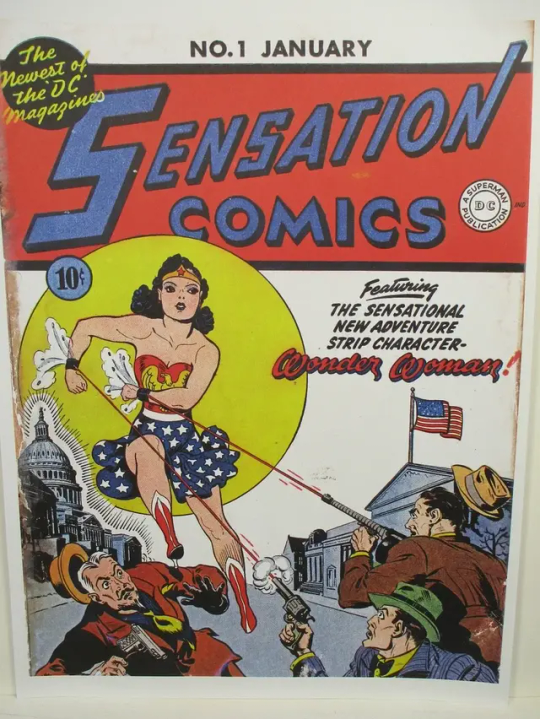
820 notes
·
View notes
Text
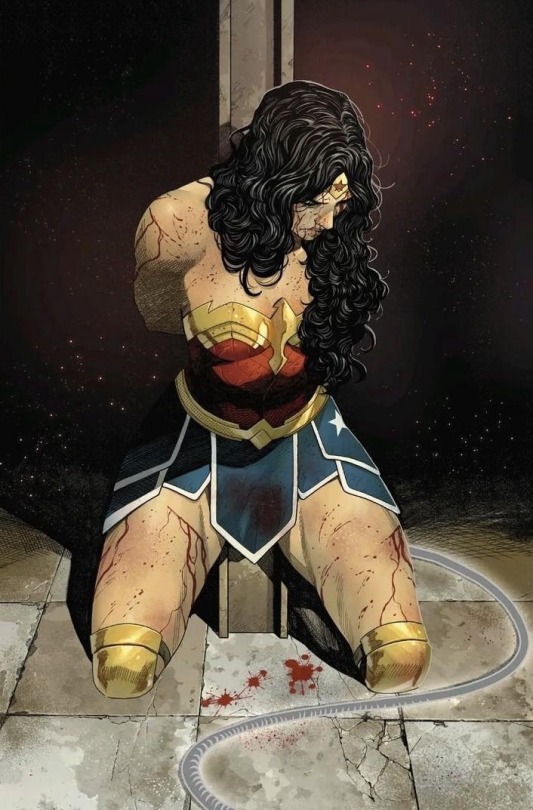
Wonder Woman #8 (2024) - Preview
Written by Tom King
Art by Daniel Sampere
The ghost of William Moulton Marston approved this image
21 notes
·
View notes
Text
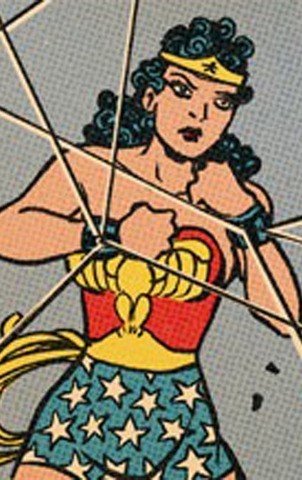
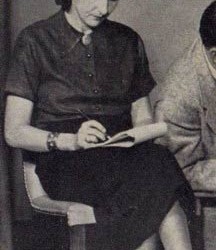
Wonder Woman's bracelets were inspired by those worn by Olive Byrne, who the character was primarily based on. Byrne was in a polyamorous relationship with William and Elizabeth Marston and is said to have worn the bracelets to represent their unofficial marriage in lieu of wedding rings.
#wonder woman#olive byrne#diana of themyscira#dc comics#william moulton marston#elizabeth holloway marston#even after william passed away in 1947 olive and elizabeth remained together for 43 years
42 notes
·
View notes
Text
My main takeaway from reading Wonder Woman comics from Marston to Perez to Jimenez to Rucka, is that the heart of the franchise is the mother-daughter story of Hippolyta and Diana. The mother who has seen and experienced the worst of humanity and wants to shield her people and especially her only daughter from it and the daughter who wants to go out and explore the world and use her powers to make a difference.
Steve is the catalyst for Diana leaving the island but in nearly every era, the relationship has fizzled out and dragging it out has only been detrimental to Diana and her supporting cast.
Making Diana/Steve central to the franchise and making Zeus Diana's father undermines the core relationship of the franchise.
12 notes
·
View notes
Text
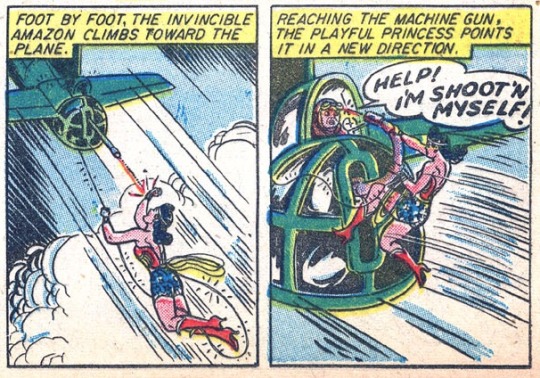

Wonder Woman Vol 1 #11
11 notes
·
View notes
Text
Golden Age Superman: A story with oddly progressive leanings with an origin that can be read as a metaphor on being an immigrant. Golden Age Superman did a lot of cool stuff. Plus, Canadian ties through Joe Shuster!
Golden Age Wonder Woman: A strangely progressive story about feminism written by a psychologist who was in a polyamorous relationship and may have had a bondage fetish. Golden Age Wonder Woman is odd, but fun and amazing. Some of her villians even get redeemed. And she has a plus sized friend in Etta Candy! It's shockingly progressive to me.
Golden Age Batman: Um. It was there, I guess? Batman shows up and kills people or whatever. It's all very boring and tiresome to read. It should have been left in the wastepaper basket of history where it belonged. Until the joker shows up, batman is just some boring dude. And even after, he's just some boring rich dude. He sucks.
#superman#golden age superman#jerry siegel#joe shuster#wonder woman#golden age wonder woman#william moulton marston#etta candy#anti batman#anti bruce wayne#fuck batman#forgive the profanity#dc#dc comics#dc universe#dcu#comic books#comics#comic book#golden age comics
9 notes
·
View notes
Text
RIP to William Moulton Marston, Elizabeth Holloway, and Olive Bynes you would’ve loved today’s bdsm & poly dating scenes

36 notes
·
View notes
Text
Happy Birthday Elizabeth Holloway Marston 🎂 co creator of Wonder Woman, feminist, kinky polyam icon 🙌
This is her official Wikipedia picture and I love it.

#elizabeth holloway marston#elizabeth marston#wonder woman#william moulton marston#olive byrne#polyamory
8 notes
·
View notes
Text
On February 16, 1977, the first season of Wonder Woman ended. This marked the last episode on ABC (seasons 2 and 3 were on CBS), the last episode to take place during the World War II era, and the last appearances in the series of Wonder Girl, General Blankenship, and Etta Candy. ("Wonder Woman in Hollywood", Wonder Woman, TV, event)

#nerds yearbook#tv#febuary#1977#wonder woman#wonder woman in hollywood#dc#dc tv show#dc comics#world war ii#lynda carter#william moulton marston#stanley ralph ross#jimmy sangster#bruce bilson#lyle waggoner#steve trevor#richard eastham#phil blankenship#beatrice colen#etta candy#super hero#robert hayes#carolyn jones#queen hippolyta#debra ringer#wonder girl#hollywood#paradise island#real life event
62 notes
·
View notes
Text

Wonder Woman is perhaps the iconic superheroine. With her godlike powers, lasso of truth and Amazon heritage, Princess Diana of Themyscira is understandably looked on as one of the clearest manifestations of female power in the comic book universe. There is of course a backstory to WW’s dominant appearance and that lies with the attitude and views of her creators, writer William Moulton Marston and illustrator Harry G Peter. Marston in particular was heavily influenced by his feminist wife, Elizabeth who wanted her husband to create a powerful female hero, physically superior to men, and equal to them intellectually to demonstrate women’s potential to challenge the restrictive gender roles of the early 1940s. The Marstons lived an unconventional lifestyle, establishing a ménage a trois with the beautiful dark haired Olive Byrne, who Peter allegedly used as his inspiration for Diana’s appearance. William Marston’s liberal and pro-feminist views were real enough, but he also had a deep fascination with the bondage fetish and his Golden Age stories are filled with imagery of Wonder Woman being tied up, chained up and generally held captive by any number of male and female villains. It was therefore no accident that Diana’s principal weapon is not her super strength or robot plane, but her golden lasso - a lariat that compels anyone caught in it to tell the truth, but which is also a super tough rope very useful for restraining enemies who did not wish to be captured by the Amazon.
As can be seen from the page above, the bondage in Marston’s and Hay’s work was not confined to Wonder Woman herself. Her college sidekicks, the Holliday Girls led by the overweight but irrepressibly cheery Etta, were frequently bound and gagged and requiring Amazonian rescue, but were more than capable of dishing out the bondage themselves when the occasion arose. As the relative comics artistic freedoms of the wartime years were pulled back in the 1950s, and the portrayal of Wonder Woman passed to other illustrators, the fetish imagery associated with the character was considerably reduced. However, Wonder Woman has remained a favourite comic book character, female role model and feminist icon ever since. The groundbreaking Marstons would be proud.
Source: Wonder Woman: the Golden Age Omnibus Vol 1 (2023)
#wonder woman#diana prince#dc comics#golden age of comics#william moulton marston#Elizabeth marston#comics feminism#olive byrne#princess diana of themyscira#the Holliday girls
10 notes
·
View notes
Text
I was at a book launch with a friend last night--the book itself was a richly illustrated album containing biographies of women from history wo, for different reasons - forward in romance, having power, demanding recognition - were labelled a whore during their lifetime. It was written by two very sweet women, and whole launch was just lovely.
The friend bought the book and some of their earlier stuff (the yhave written several similar books on women's history before, and one of them also has several historical novels published), and we remained behind to have them signed and to have a few words with the authors - and I mentioned them that they would surely find William Moulton Marston's story fascinating with his "pro-women" crusade and two wives who pretty much enabled his carreer (the authors were fascinated, made a note of it, and thanked me for the tip).
And then somebody behind my back just yelled in "akshually, the two women were in love with each other, not with Marston."
First of all, RUDE. Second of all, you have seen Professor Marston and the Wonder Women, have you? Bless your heart.
I hate that movie. Okay, I have a love-hate relationship with it, because it does a good job at explaining Martson theory. But all the historical bits are basically bullshit, and let's be clear here: the movie was written and directed by a lesbian woman, and she pretty much pushed the envelope on the clear lesbian angle.
The truth is... we will problaly never know the whole story. But the facts: 1, Marston brough Olive into the relationship, and pretty much said that Elizabeth either accepts her, or he is choosing Olive. Elizabeth wasn't present for the beginning of the relationship. 2, Marston did have this idea that a woman who has sexual relations with another woman will be a better lover for her man 3, The children (both Elizabeth and Olive had two kids from Marston) didn't know that they were biologically half-siblings, or that Olive and Marston were lovers. Olive An, Elizabeth's daughter, still said, as late as in 1999, that Olive was their housekeeper. 4, After Marston's death in 1947, Olive and Elizabeth lived together for the rest of their lives, altough Marston's biographer, Jill Lepore, puts it down firmly that they had seperate bedrooms (which the other end of the envelope pushing, imho).
So it's likely that there was something between Elizabeth and Olive, but it's clearly Marston who was the center of this relationship-universe. To say that the primary relationship was between Elizabeth and Olive is inaccurate.
...And to yell it from behind my back while I'm talking to the authors is rude.
10 notes
·
View notes
Text
when your psych professor asks you to write a paper disproving the polygraph test & one of your special interests is the history of golden age comic publication
#I am restraining myself#via rambles#william moulton marston#MY MAN!!!#polygraph test#elizabeth holloway marston#wonderwoman#golden age comics
3 notes
·
View notes
Text
It’s kinda funny that a bit like Superman-Goku have parallels Sailor Moon-Wonder Woman is like the two iconic girl power magical princess superheroes
BUT
while Sailor Moon’s creator was like “these are the types of friends I woudkve wanted in my childhood (the guardians as a whole) : )”
Wonder Woman creator was like “you know what would be really hot?”
Like Diana’s creators did geninuely care about the social issues around gender and whatnot but it’s just funny that that angle is so prominent espiclaly in Contrast to the Sailor Moon one lmao
#shut up alex#personal#dc#dc comics#dc universe#magical girl#magical girls#sailor moon#wonder woman#usagi tsukino#diana prince#princess serenity#naoko takeuchi#william moulton marston
2 notes
·
View notes
Text
A note from Pete’s brother Byrne in his official obituary offers an inside peek at Pete’s role in early Wonder Woman comics:
My brother Pete was always a man of enormous imagination. As a kid, he was a dreamer. When we were teenagers our dad, who was often under pressure to produce scripts for his Wonder Woman superheroine, offered $100 to anyone writing a usable scenario for a Wonder Woman episode. Though $100 was a fortune at that time, Pete was the only one of us who could dream them up.
Pete seemed to have had a good relationship with his father. On top of pitching plots for Wonder Woman, Pete also left Harvard in the mid-1940s to return home and help care for his father. William Moulton Marston had polio and cancer, and passed away in 1947. It’s lovely that Pete created such a testament to his father’s creation with his Wonder Woman Museum. The museum is also a testament to the women who raised him; Pete’s mother, Elizabeth, gave Marston the idea to create a female superhero, and the Marstons lived in a polyamorous relationship with Olive Byrne, who raised the kids (Marston had two with each woman) and also inspired key elements of Wonder Woman’s look and personality.
Regrettably, I never got the chance to interact with Pete directly, though his daughter Christie was a great help when I was researching Wonder Woman Unbound and I know that Pete had a big hand in the materials that she sent me and the recollections that she was able to share. By all accounts, he was a kind and warm man; everyone who visited the museum (a guest list that included Lynda Carter herself!) seemed to come away with an appreciation and affection not just for its myriad wonderful items but also for the man who assembled it all.
-January 19, 2017
#wonder woman#william moulton marston#dc comics#diana prince#wmm#pete marston#olive marston#elizabeth olive marston
2 notes
·
View notes
Text
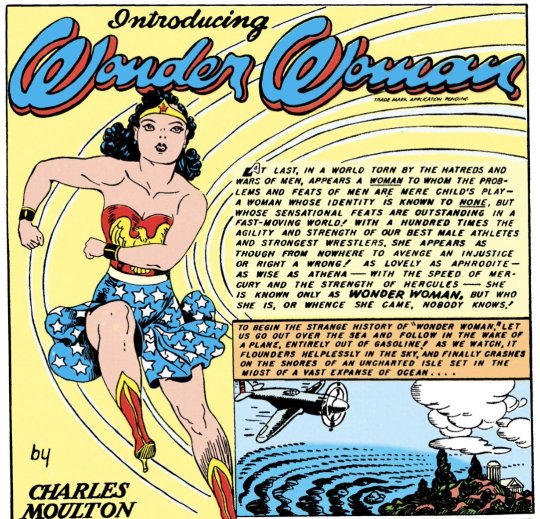
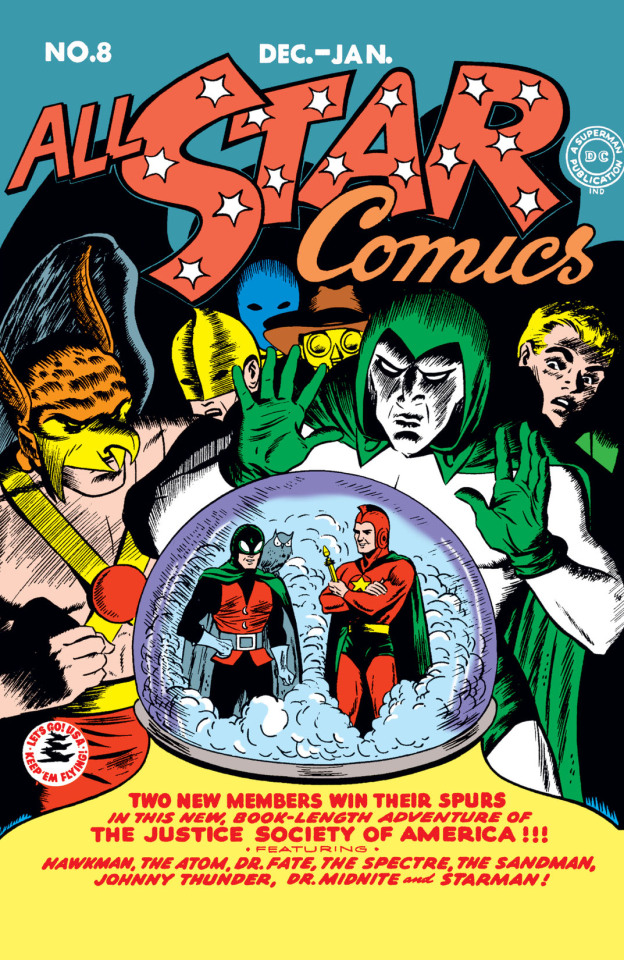
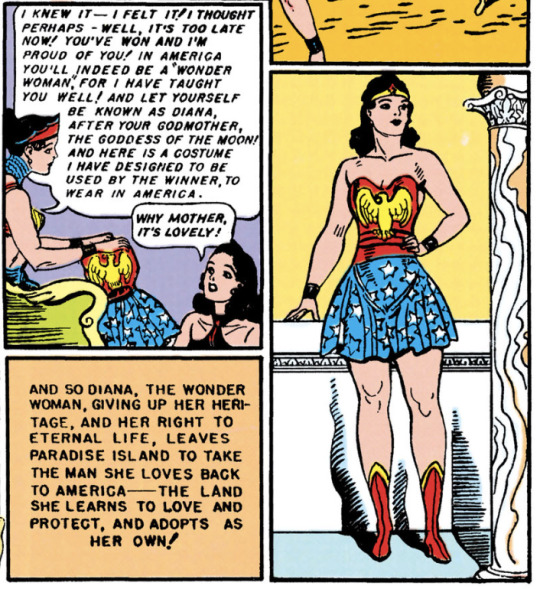

All-Star Comics #8, with the first appearance of Wonder Woman by William Moulton Marston and Harry Peter, was released today in 1941!
#all star comics#comics to remember#comics#dc comics#harry peter#william moulton marston#wonder woman
3 notes
·
View notes
Text

what we want can never happen.
- why?
because the world won't let it.
- the world can't stop us.
#professor marston and the wonder women#pmatww#elizabeth marston#william moulton marston#charles moulton#bill x elizabeth#olive byrne#polyamory#polyamory film#pmatww meme#he did have both women in the end#they had each other as well#i love them all <333#bill x elizabeth x olive
15 notes
·
View notes